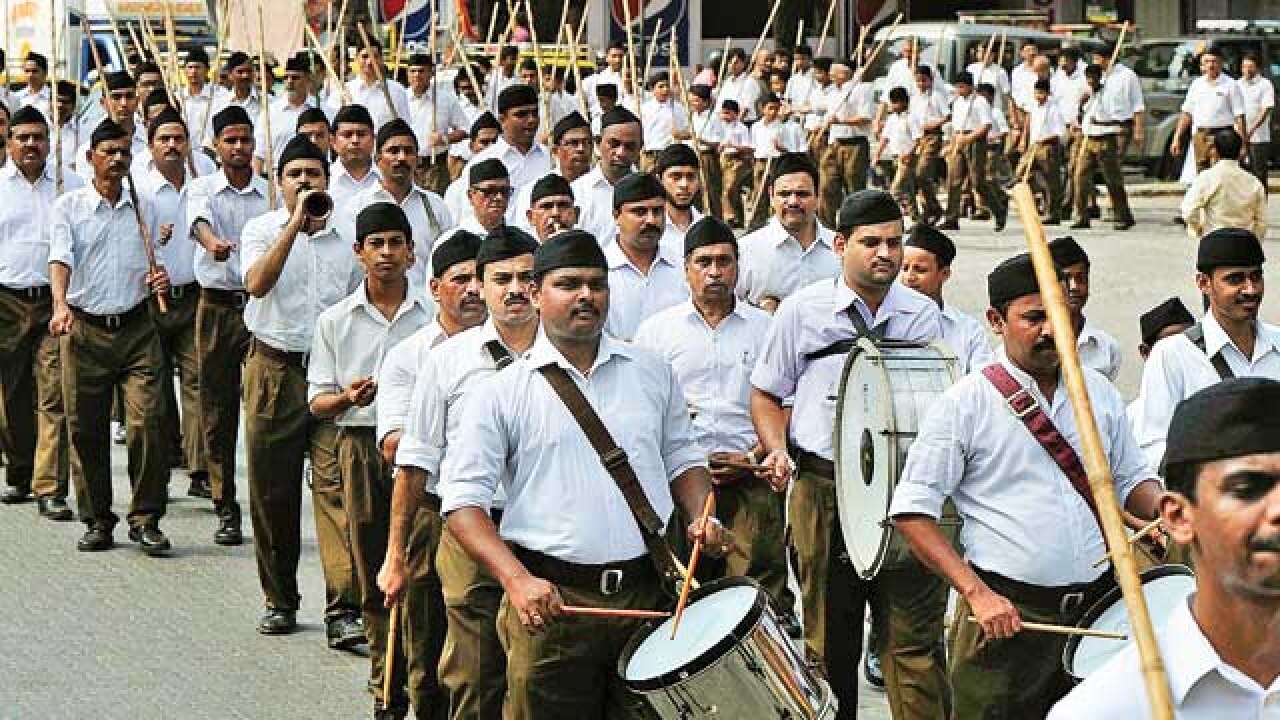
Teen saal baad. Apart from the usual celebrations and congratulations from supporters or the equally predictable criticism and cribbing from detractors, there is little new or thought-provoking on the Modi sarkar’s completion of three years in office. An exception is a recent May 16 post, titled ‘Three Years After’, in a prominent magazine.
Seetha, the author of the article, is right in saying that 2014 was not merely about PM Narendra Modi’s “unexpectedly stupendous rise to power”, but also about the expectation of a “right-wing ecosystem, representing all shades of the right wing”. Indeed, the BJP’s win at the national sweepstakes and subsequent swearing-in of Modi as the PM was a cultural and civilisational watershed, as I myself argued. But, according to the writer, “Three years on, that prospect has all but vanished.” Is she right?
To answer the question, we must ask, first of all, what is the ‘right wing (RW)’? To the writer, it is “a broad term covering liberals… libertarians as well as the Bharatiya Janata Party/Sangh Parivar loyalists” with “sub-categories like the economic right, cultural right, religious right, social liberals, social conservatives.” She wisely adds, “These are not watertight, mutually-exclusive compartments”; her only caveat is that RW “does not include socialists and communists”. RW, thus, truly becomes an umbrella, if not a rainbow, to signify a coalition of forces, interests, and ideologies.
What, then, is the problem? The piece argues that RW essentially boils down to two groups, right liberals and libertarians on one side, and BJP/Sangh Parivar loyalists on the other. These two groups, “far from natural allies”, are actually at odds with one another. At one time, “their coming together was unthinkable. But the sweeping BJP victory, if not Modi’s personal charisma, seemed to make that impossible possible”: “Modi provided a bridge between the two. Though there were some liberals who wanted to have no truck with him, the BJP or the larger Sangh Parivar, others were willing to set aside their reservations so long as Modi delivered on the economic right agenda and kept the conservative/hardline/fringe groups in check. Sections of the BJP-Sangh Parivar loyalists were also willing to engage with the liberal right, more out of recognition that the fight against the leftist cabal needed a combined effort.”
The two groups, unlikely, even uncomfortable, bedfellows to begin with, are now close to a divorce — “even as they cheer the economic reforms”, the liberal right is disappointed at their pace: “the lack of a clean break with UPA-era policies” especially galls. The liberal right is also unhappy with “hardline/fringe elements” and “vigilante groups”, and “completely devastated by the anointment of Yogi Adityanath as the Chief Minister of Uttar Pradesh”. The Modi charisma is no longer enough to bridge their divide: “what was initially tolerated as an explosion of pent-up frustration and anger is — three years on — beginning to grate”.
Seetha asks if the so-called extreme fringe is really just that or is it actually central to the Hindutva machine. Furthermore, how much time do we need to find out? When will we get on with the main agenda of the mandate, which was less but better governance, plus wholesale economic reforms? With the display of “hyper-nationalism”, “dietary directives”, and “vigilantism”, not to speak of “the growing tribe of self-appointed definers and defenders of Indian culture and history”, Seetha contends that the liberal right’s patience is wearing thin. The “sneering” and “belligerent” opposition to their concerns is not just distressing, but “distasteful”. She fears that the “chasm between the two groups… is not going to be bridged any time soon”. Instead, they seem to be on the verge of a decisive split: “As a result, there is going to be no right-wing ecosystem representing all shades of opinion, the way there is a left-wing ecosystem. A right-wing ecosystem may get built, but this will be monochromatic, not multi-hued.”
Though well-argued, Seetha’s case is cautionary, rather than definitive. In reality, the liberal right has little political clout. It may command some respect but has little leverage. Its admonitions attract the same degree of patronising disregard as its core values. On the ground, the Sangh and its cadres know that its approval counts for next to nothing; therefore, they continue to push their own agenda, as also candidates for plum positions. The feeling is that the right liberals need the government more than the government needs them. It is the former who are seekers of preferment and patronage; as to the latter, it can hire and fire whatever expertise from the liberal right it requires.
Should the liberal right take itself so seriously? No. But should the BJP-led, Sangh-backed government disregard it either? Again, the answer is no. Both need each other; the rainbow right is a deep-seated civilisational imperative. The arrogance of power is as self-defeating for the BJP/RSS as the arrogance of the intellect for their liberal right supporters. This historic opportunity should not be wasted. Let Seetha’s warning serve as a wake-up call to those in power. Else, the outcome may be no different from what Hindus have suffered for 1,000 years: foot in the mouth, shot in the foot. Back to downfall; subjection redux.
The author is a poet and professor at JNU. Views expressed are personal.